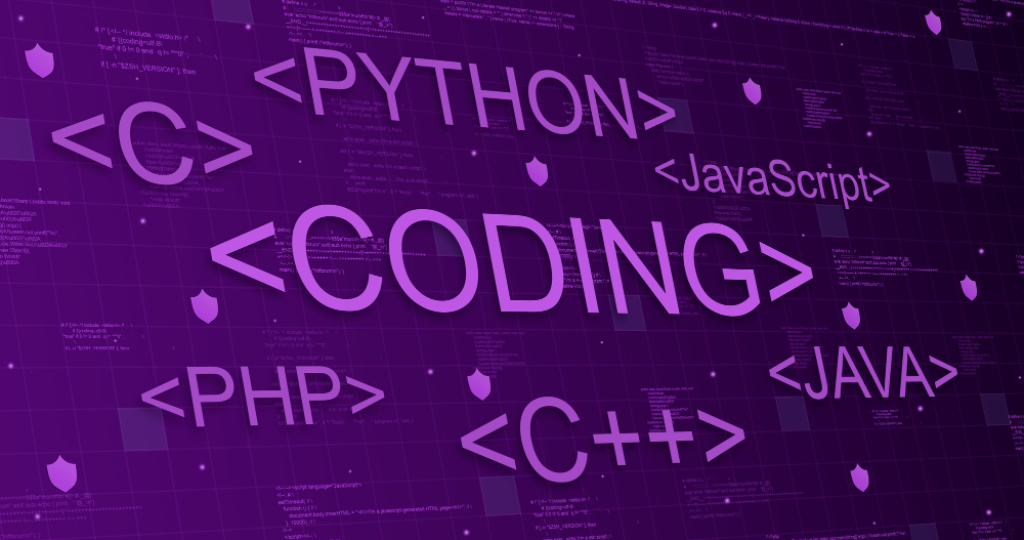Table of Contents
ToggleAs AI technology continues transforming every industry, learning to code has emerged as one of the most valuable skills in today’s digital era. With that, many self-taught software developers ask a common question: “How to become a software developer?”
In this blog, we will guide you on how to learn coding from scratch, starting with understanding the different roles in tech, choosing the best programming language to learn first, building your first project, and ultimately learning how to get a job in tech with no experience.
So let’s get started to learn!
Step 1: What exactly is software development?
Software development is the process of designing, coding, testing, and maintaining applications or systems that solve real-world problems. It spans everything from mobile apps and websites to large-scale enterprise systems and emerging technologies like AI and machine learning.
It’s more than just a job, it’s a gateway to creating real-world solutions, building innovative products, and solving problems that impact millions of lives.
If you are just starting, it might feel confusing, like standing at the base of a mountain. But here’s the good news: you don’t need a computer science degree or years of experience to get started.
What you do need is clarity, consistency, and the curiosity to learn.
Also Read: What is Adaptive Software Development? A Beginner’s Guide 2025

Step 2: Understand the Roles in Software Development
Before exploring tutorials and coding languages, it’s important to understand what software developers do. Not all coding jobs are the same, developers work in various roles depending on which part of the software lifecycle they focus on. It is important to understand these roles that help you to decide which path suits your interests and strengths.
1. Frontend Developer: A frontend developer is responsible for building the parts of a website or application that users directly see and interact with. This includes designing layouts, buttons, and menus, and ensuring the website is responsive across devices.
They work with technologies like HTML, CSS, JavaScript, and frontend frameworks like React or Vue.
2. Backend Developer: Backend developers manage everything that happens behind the scenes, like databases, server logic, and application architecture. They ensure that data is correctly stored, retrieved, and processed, enabling the frontend to function properly.
Technologies often used include Python, Node.js, Java, and database tools like SQL or MongoDB.
Frontend vs. Backend Development
Below is a table that provides a clear comparison between the two paths, i.e., Frontend vs. Backend Development, to help you decide which aligns better with your interests and skills.
| Aspect | Frontend | Backend |
| Focus | User interface & experience | Server-side logic & databases |
| Key Languages | HTML, CSS, JavaScript | Python, Node.js, Java, PHP |
| Frameworks | React, Vue, Angular | Express.js, Django, Spring |
| Tools | Figma, Chrome DevTools | Postman, Docker, SQL |
| Who It Suits | Visual thinkers, designers | Problem-solvers, logic-minded |
3. Full-Stack Developer: Full-stack developers are versatile professionals who work on both the frontend and backend of a web application. They understand how to build complete features from the user interface to server logic and database handling.
This role is ideal for those who enjoy understanding and building entire systems end-to-end.
4. DevOps Engineer: A DevOps engineer bridges the gap between development and operations, focusing on automation, deployment, and infrastructure management. They ensure that applications run smoothly in different environments and help with continuous integration and delivery (CI/CD) pipelines.
Their work improves development speed, reliability, and scalability.
5. QA (Quality Assurance) Engineer: QA engineers are responsible for testing software to ensure it functions correctly and meets quality standards. They identify bugs, perform manual and automated testing, and help prevent issues before deployment.
Their role is important in delivering a stable and user-friendly product.
Also Read: Software Development Tools You Need for Customization
Step 3: Choose the Right Learning Path
Once you have identified a role that interests you, like frontend, backend, or full-stack, the next step is figuring out how you want to learn those skills. There’s no one-size-fits-all approach. Your ideal learning path will depend on your goals, budget, timeline, and preferred learning style.
Below are three common learning paths you can choose from:
- Self-Taught Learning: Using free or low-cost resources online at your own pace can help you to become a self-taught software developer.
- Coding Bootcamps: Structured, intensive programs that focus on job-ready skills in a few months.
- Computer Science Degrees: A formal academic route that provides in-depth theoretical and practical knowledge over several years.
If you are confused whether to choose a coding bootcamp vs degree, the table below will help you decide based on your learning goals and how to learn coding from scratch:
| Category | Coding Bootcamp | Computer Science Degree |
| Duration | 3–6 months | 3–4 years |
| Cost | $5,000 – $20,000 | $30,000+ |
| Learning Style | Project-based, fast-paced | Theory-heavy, academic |
| Job Focus | Entry-level job-ready | Broader, deeper foundation |
| Ideal For | Career switchers, fast-track | Students with long-term plans |
If you are a self-starter who wants to enter the field quickly, coding bootcamps or self-paced courses can help you gain practical skills and build a portfolio in months.
On the other hand, a computer science degree can offer more long-term value for those targeting specialized roles or larger tech companies that require formal education.
Step 4: Best Programming Language to Learn First
If you are new to coding, one of the first questions you will face is: Which programming language should you start with?
The answer depends on your goals, but here are the three best programming languages to learn programming online first that offer a strong foundation and real-world application.
- Python: Python is known for its clean and easy-to-read syntax, Python for beginners. It’s widely used in web development, automation, artificial intelligence, and data science, making it one of the most versatile languages to learn first.
- JavaScript: JavaScript is essential for frontend web development and powers most of the interactivity you see on websites today. It runs in every browser, making it ideal for building dynamic web apps and working with modern frameworks like React and Vue.
- C++: C++ is more complex but offers deep insights into system-level programming, memory management, and performance optimization. It’s an excellent choice if you are aiming to build games, embedded systems, or want to understand how software works at a low level.
Tip: Start with one language and stick with it. The key is to master the fundamental variables, loops, conditionals, and functions before moving on to advanced topics or learning another language.
(Also Read: What is Embedded Software?)

Step 5: Learn Coding from Scratch (Free Resources Included)
You don’t need a big budget to get started in tech, many self-taught software developers begin their journey in software engineering for beginners using free, high-quality learning platforms.
If you are looking for coding for beginners free or want to learn programming online at your own pace, the internet is packed with valuable resources.
Below is a list of the best online coding courses and platforms to help you get started from scratch.
Top Platforms to Learn Coding for Beginners Free
| Platform | What It Offers |
| freeCodeCamp.org | A full curriculum covering web development, JavaScript, Python, and certifications. |
| The Odin Project | An in-depth full-stack development course with real projects and Git integration. |
| W3Schools | Beginner-friendly tutorials for HTML, CSS, JavaScript, and web basics. |
| CS50x by Harvard | A foundational Computer Science course taught by Harvard professors (via edX). |
| YouTube Channels | Channels like Traversy Media, The Net Ninja, and Programming with Mosh offer project-based tutorials for free. |
Pro Tip: Start with just one platform to avoid overwhelm and ensure consistent progress. Once you are comfortable, mix in small projects to apply what you have learned.
Step 6: Build a Basic Project (Even if It’s Small)
Watching tutorials is a great way to learn coding concepts, but true progress happens when you start building something on your own. Learning to code isn’t just about consuming content; it’s about applying your knowledge in real-world scenarios, even through the simplest of projects.
You don’t need to build anything complex or flashy. You can start small, focus on core concepts like variables, functions, and user interaction. These hands-on experiences help you understand logic, strengthen your problem-solving skills, and show you how different components of code work together.
The more you build, the more confident and capable you will become. Plus, even basic projects can become valuable additions to your portfolio when applying for junior developer roles or internships.
Here are 5 beginner-friendly project ideas to get you started:
- To-Do List App: Create, update, and delete tasks using JavaScript and localStorage.
- Personal Portfolio Website: Showcase your bio, skills, and future projects using HTML, CSS, and a bit of JS.
- Weather App: Use an open weather API to fetch and display live weather data.
- Calculator: You can design a calculator for basic math functions using interactive buttons.
- Countdown Timer: You can create a timer or stopwatch that counts down and resets as needed
The self-taught software developer must remember, every project you complete is a step closer to becoming a job-ready developer.

Step 7: Version Control Basics: Git & GitHub
As you start building projects, you will quickly realize the importance of keeping your code organized and safe. That’s where version control comes in.
It allows you to track changes in your code over time, go back to previous versions if something breaks, and collaborate with others, just like developers do in real-world software teams.
What is Git?
Git is a version control system used to track changes in your source code. Think of it as a smart way to save your work. Instead of copying and pasting files to make backups, Git allows you to create snapshots of your code (called commits) at different stages. You can:
- Initialize a Git project using git init
- Save changes with git add and git commit
- Share your code online with git push
- Pull updates from others using git pull
Even as a software engineer for beginners, using Git helps you build habits used by professional developers.
What is GitHub?
GitHub is an online platform where you can host your Git repositories in the cloud. It not only stores your code safely but also lets others view, download, or collaborate with you. It’s also a great place to showcase your work to potential employers.
With GitHub, self self-taught software developer can:
- Create repositories (a storage space for your projects)
- Upload and manage your code
- Collaborate with others via pull requests and issues
- Build a public profile that highlights your contributions
To get started today, you need to:
- Sign up for a free account on github.com
- Initialize Git on your local project using git init
- Commit your changes, then push your code to GitHub
- Start small—even uploading your to-do list app counts as real experience
Getting familiar with Git and GitHub early on helps you feel more comfortable working like a real software developer roadmap and prepares you for collaborative work in professional environments.
Step 8: Join Developer Communities and Forums
Learning to code on your own can sometimes feel isolating, but you don’t have to do it alone. Joining active developer communities and forums is one of the best ways to stay motivated, get help, and learn from others who are walking the same path.
If you are a self-taught software developer or just starting to learn programming online, surrounding yourself with other learners and professionals can fast-track your growth.
Recommended Communities
- Reddit: r/learnprogramming, r/webdev
- Stack Overflow: Ask questions, solve others’ problems
- Discord Servers: 100Devs, CodeSupport
- Twitter/X: Follow devs, join conversations using #CodeNewbie
Engaging with these communities not only improves your learning but also helps you understand the software developer roadmap more clearly. It’s also a great step if you are
thinking about how to get a job in tech with no experience. Many people land their first role through networking, referrals, or community recommendations.
Tip: Don’t be afraid to ask questions or share what you are building. Every expert was once a beginner.

Step 9: Prepare for Your First Job in Tech
Landing your first job in tech is a major milestone, but how well you prepare can make all the difference. From creating a standout resume to acing technical interviews, every step counts when you are entering the competitive world of software app development.
Resume Tips:
- Keep it clean, concise, and ideally one page long.
- Highlight 2–3 key projects with GitHub links.
- Focus on relevant technical skills, certifications, and tools you have used (e.g., JavaScript, Git, React).
- Include any freelance, open-source, or internship experience—even if it’s unpaid.
Portfolio Tips:
- Display 2–3 well-built projects with clear explanations.
- Add a personal “About Me” section that briefly tells your story and career goals.
- Include your resume and a contact form to make it easy for recruiters to reach you.
Interview Preparation:
- Practice coding on LeetCode or HackerRank.
- Do mock interviews on Pramp or with peers.
- Review common junior developer interview questions like:
- What is a closure in JavaScript?
- How do you use a REST API?
- What’s the difference between == and ===?
- How would you debug a broken application or feature?
Tip: Show your willingness to learn, attitude matters as much as skill.
Step 10: Entry-Level Software Developer Salary Overview
Entry-level salaries for software developers vary widely based on location, skills, and company size.
Below is a quick overview to give you an idea of what you can expect as you begin your career.
| Country | Average Entry-Level Salary (USD) |
| United States | $60,000 – $85,000 |
| Canada | $50,000 – $70,000 |
| United Kingdom | £25,000 – £35,000 |
| Australia | AUD $55,000 – $75,000 |
| India | ₹3 – ₹6 LPA |
| Germany | €40,000 – €55,000 |
Note: Salaries vary based on skillset, company size, and location.
Conclusion
Becoming a software developer isn’t a single step, it’s a journey made of small, consistent actions. From understanding different roles and choosing your first programming language to building real-world projects and preparing for your first job, the path is both challenging and deeply rewarding.
You don’t need to master everything at once. Start small, stay curious, and engage with a community that supports your learning.
If you are looking for hands-on experience or want to collaborate on impactful projects, consider working with a professional software development company like Alphaklick Solutions. We specialize in building real-world applications across industries from eCommerce and healthcare to SaaS and AI, helping learners and businesses alike turn ideas into scalable solutions.

